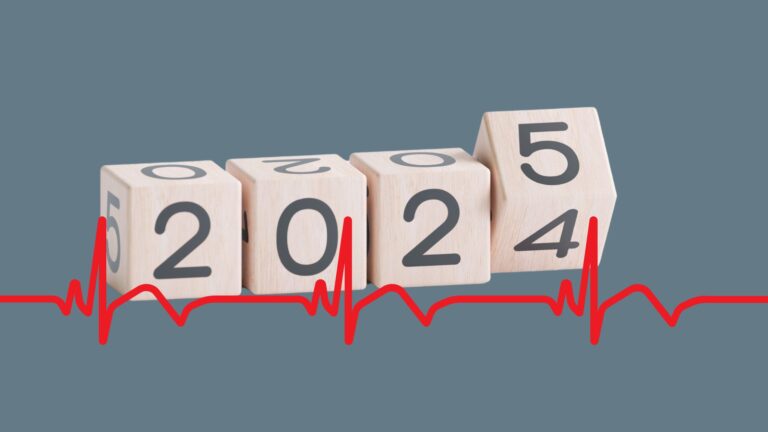In this article we will explain what a Hospital Admission Authorization is, known as AIH and its main rules. Anyone who has been hospitalized has certainly noticed a series of paperwork involving this system. The difference, however, is that patients rarely pay attention to these details, but the team that carries out this process takes great care and, more than that, a responsibility behind this factor.
This is because, when entering an environment like this, individuals need to receive the Hospital Admission Authorization (AIH), a document completed by the doctor who evaluated this subject, ultimately deciding to leave him hospitalized for a few days.
Therefore, in this record, it is possible to find numerous characteristics related to this procedure, such as procedure codes, materials used and other details that involve detailed management and a lot of attention.
If you are in the health sector, especially a manager of health plan operators, and have doubts about all this bureaucracy, understand now how it works and discover the best way to go through this stage with simplicity and effectiveness. Check out this article and don't miss out on the Saudi!
What is the Hospital Admission Authorization (AIH)?
The Hospital Admission Authorization, also known as AIH, is a document that serves to identify a patient and the services provided under the hospital admission regime. So that it provides the necessary information for managing the Hospital Information System.
Its form is a document from the Unified Health System (SUS), filled out by hospitals to reimburse the care provided to patients financed with public resources, as shown in a study carried out by the Department of Health Administration and Planning at the National School of Public Health.
Taking this into consideration, this authorization is generated when a hospitalization occurs in a place that has an agreement with the system, be it a public or private provider. Once ready, it is sent to the unit manager who is providing the services. And, therefore, these managers need to send a file to the Ministry of Health every month that contains data on hospitalizations that have occurred in the country.
It is from this document that billing for hospital services provided to the SUS is made possible and this authorization is only issued by the bodies themselves or those authorized by the System. Furthermore, each one has its own number.
And there's more! Data from Hospital Admission Authorization (AIH) forms represent the country's largest source of information on hospital production, meaning that there is agreement between the information in these records noted by administrative employees and that in medical records.
 What are your main rules?
What are your main rules?
There are some rules for the AIH to be carried out, such as the necessary documents and other details. Check out what they are below:
Medical report for issuing AIH
This is where the patient's AIH Hospital Admission Authorization will be requested. The report must be completely filled out, correctly, by the doctor. It must contain the patient's identification, anamnesis information, physical examinations, ancillary, the conditions under which hospitalization is justified and initial diagnosis.
In addition, the doctor will record your CRM, CPF and the procedure code that was requested that corresponds to the diagnosis in the medical report. The latter must be in accordance with the SIH-SUS Table. Everything must be printed and this will guarantee payment for hospitalization.
Medical Report for Request for Administrative Discharge
This is a request document that must be completed by the biller, in addition to being authorized by the billing physician. All of this must be in accordance with the rules established by the Ministry of Health.
Report on the Use of Orthosis, Prosthesis and Special Material
This document must be duly completed by the doctor when an orthosis, prosthesis or special material is used on the patient. It allows the OPM to be charged and, together with an invoice, will guarantee payment, as long as it is compatible with the SUS compatibility table and that the quantity does not exceed what was established for each of the products.
The different types:
In addition to the rules seen above, it is important to consider that there are different types of AIH Hospital Admission Authorization. The initial one is for hospitalization that is just beginning, while the continuous or long-stay one is for psychiatric cases, in which patients need prolonged care.
Taking this as a basis, find out about them below:
- AIH-7: its form is provided by the Ministry of Health, with its own number and printed in advance. This authorization is issued by the issuing bodies themselves or those authorized by the SUS.
- AIH-1: it is through this that the hospital will be able to identify patients and services provided when there is hospitalization. With it, the hospital will receive payment for the services provided to the patient, if it meets the MS standards.
- AIH-5: is used for identification if the patient has a long stay in wards such as psychiatry, patients who are under long-term care or are being monitored after kidney, heart, bone marrow, lung, liver and cornea transplantation.
Still, it is worth remembering that hospital admission is a long and complex procedure. Therefore, regardless of the reason and whether it is voluntary or not, the patient needs to know that they are not alone and that they will receive all possible care and assistance.
This is because, often, the situation scares people and is only seen as something bad and not as help in the healing process of a problem or illness. Therefore, it is essential that healthcare professionals demonstrate their support for the patient and follow all Ministry guidelines.
Do you need authorization for the procedures? Saudi can help you!
As we can see, the Hospital Admission Authorization (AIH) is a long procedure, which has many rules and healthcare professionals need to be careful. Therefore, if you are a doctor
If you are an auditor nurse, medical account analyst, or health plan operator manager, and you need help authorizing procedures, pay close attention to the tab below.
I know how SAUDI can help you improve your work and significantly improve your health plan operator's results in the first few months of use.
TODAY, how does the process of Requests for Authorization for Hospitalization, Extension, SP/SADT, Exams and Consultations work at your operator?
– Does your beneficiary need to go to the operator?
– Does your authorizing doctor still use fax/telephone to speak to the requesting doctor?
– Are there customer complaints in the request/authorization processes?
– ANS fines for non-compliance with regulated deadlines?
– What is the level of disallowances applied to authorization requests? Low, Medium, High?
With the Authorization Request Module of the SAUDI system you can control and optimize this entire scenario. Check out the main advantages below:
– Configurable Process Flow;
– Online interactions with providers and beneficiaries, via the web;
– Electronic document management – GED;
– Transaction log;
– History of usability of health services;
– Automation of Authorization Rules.
*************** ASSISTANCE IMPROVEMENTS **************
– Increases the capacity for technical analysis of requests, through access to support information in real time, optimizing the speed of analysis, registration and processing of authorizations;
– Reduces the risk of improper authorizations, through the possibility of configuring and using automatic audit rules and standardized responses;
– Allows continuous improvement of the authorization process, through access to the request and analysis trail;
– Increases the security of decisions, through real-time access to the histories of patients, providers and medical auditors, nurses and analysts;
– Reduces the impact of providers presenting undue or inappropriate charges after improper, unapproved or poorly approved service;
– Reduces the number of accounts glossed in billing;
– Contributes to reducing care costs / accident rates;
– Contributes to increased results.
***************** OPERATIONAL SUCCESS ***************
– Reduces the risk of delays in responding to requests, avoiding complaints from beneficiaries, through better workflow control, through the possibility of determining a response deadline for granting authorization or denial based on the TISS standard;
– Reduces response time to requests, through online digital communication, supported by accurate information supporting real-time decisions;
– Reduces operational costs of the Authorization Request process, completely or largely replacing call centers, paper, and emails.
In addition, we work throughout the entire process, from requesting authorization for medical procedures from the network of providers, to their respective release for payment, SAUDI's objective is to become your right-hand man in managing and reducing healthcare costs.
Get to know the SAUDI, a system designed to maintain the “financial health” of Supplementary Health Plan Operators. With software that automates the process of auditing medical service providers' accounts, enabling a clearer view for both sides and a significant reduction in unnecessary costs.











